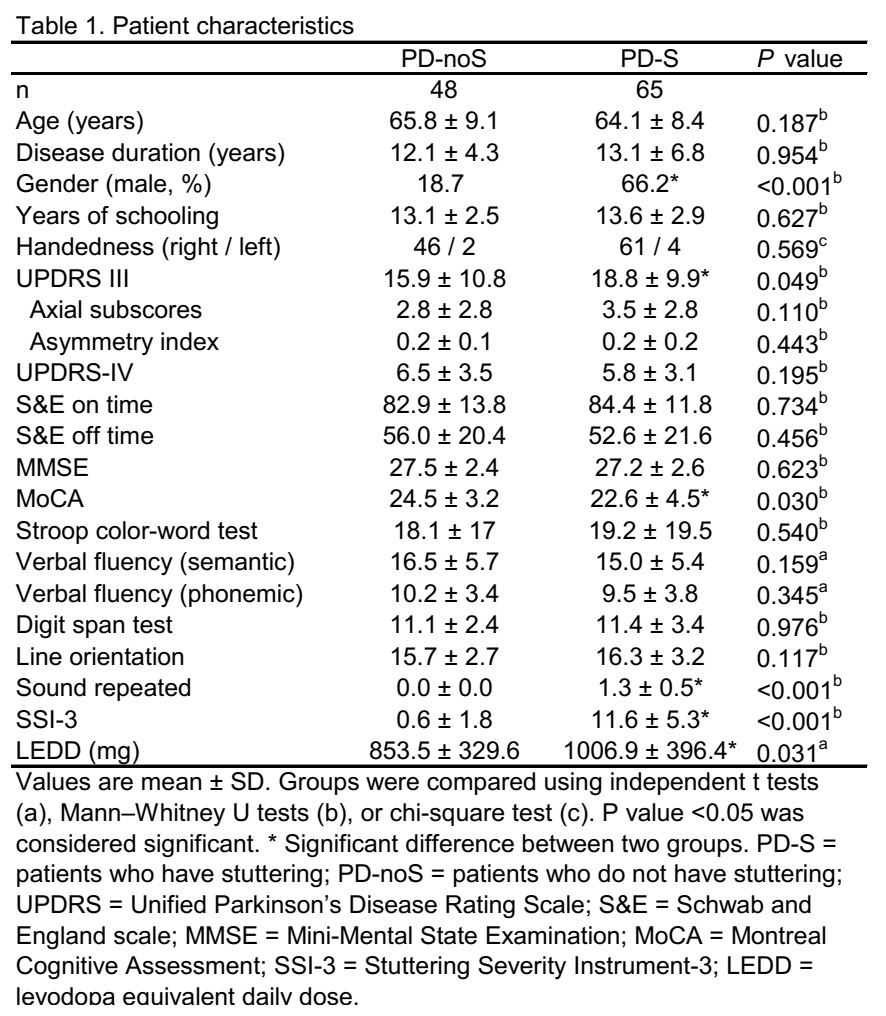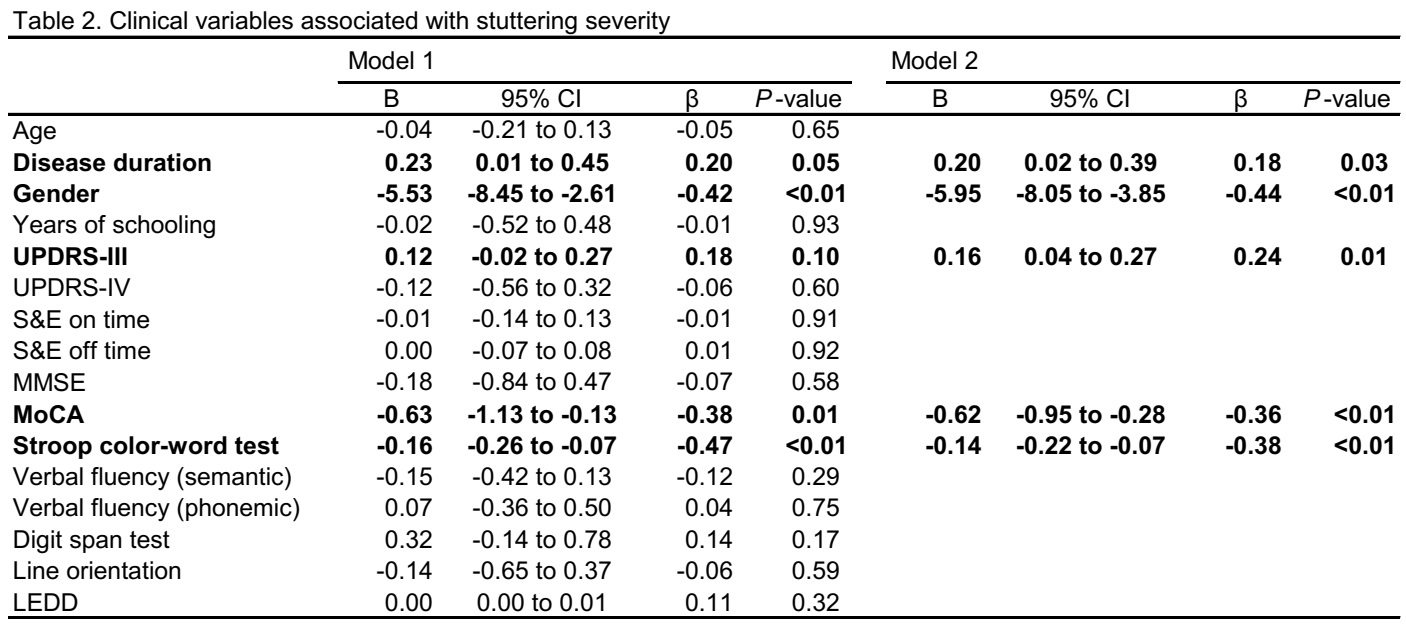Session Information
Date: Monday, October 8, 2018
Session Title: Parkinson's Disease: Pathophysiology
Session Time: 1:15pm-2:45pm
Location: Hall 3FG
Objective: We investigated clinical characteristics of a large number of advanced Parkinson’s disease (PD) patients to reveal risk factors for the development of stuttering and to clarify the pathophysiology of stuttering in PD.
Background: PD patients frequently have stuttering. However, risk factors and pathophysiology of stuttering in PD remain unclear.
Methods: A total of 113 advanced PD patients were enrolled in this study (52 men; mean age 64.8 years; mean disease duration 12.7 years). Stuttering subscore (sound repeated) according to the Assessment of Motor Speech for Dysarthria was rated from 0 to 3 (0 = normal, 1 = mild, 2 = moderate, 3 = severe). Sound repeated ≥1 was considered significant. Stuttering Severity Instrument-3 (SSI-3) was used to assess the severity of stuttering. Motor function (Unified Parkinson’s Disease Rating Scale III (UPDRS-III) and UPDRS-IV), cognitive function (Mini-Mental State Examination (MMSE), Montreal Cognitive Assessment (MoCA), Stroop color-word test, verbal fluency, digit span tests, and line orientation), and activities of daily living (Schwab and England Scale) were assessed. The demographic and clinical data of groups were compared using independent t tests, nonparametric Mann–Whitney U tests, or chi-square test, as appropriate. Multiple linear regression models were used to assess the association between stuttering severity and clinical variables.
Results: Sixty-five patients (57.5%) had stuttering. PD patients with stuttering (PD-S) had significantly worse UPDRS III (p = 0.049), MoCA (p = 0.030), and higher levodopa equivalent daily dose (p = 0.031) than patients without stuttering (PD-noS). Percentage of male in PD-S was significantly higher than that in PD-noS (p < 0.001). Multiple linear regression analysis revealed that stuttering severity was correlated with disease duration (p = 0.03), gender (p < 0.01), UPDRS-III (p = 0.01), MoCA (p < 0.01), and Stroop color-word test (p < 0.01).
Conclusions: Around a half of advanced PD patients have stuttering. Gender differences in the brain network may play a key role in the development of stuttering. Executive function seems to be important in smooth speech production. Longer disease duration and worse motor function were also correlated with stuttering severity. This may reflect insufficient compensation for more severe functional and pathological abnormality in the brain of PD patients with stuttering.
To cite this abstract in AMA style:
T. Tsuboi, H. Watanabe, Y. Tanaka, R. Ohdake, M. Hattori, K. Kawabata, K. Hara, D. Nakatsubo, S. Maesawa, Y. Kajita, T. Wakabayashi, M. Katsuno, G. Sobue. Clinical correlates of stuttering in advanced Parkinson’s disease [abstract]. Mov Disord. 2018; 33 (suppl 2). https://www.mdsabstracts.org/abstract/clinical-correlates-of-stuttering-in-advanced-parkinsons-disease/. Accessed December 29, 2025.« Back to 2018 International Congress
MDS Abstracts - https://www.mdsabstracts.org/abstract/clinical-correlates-of-stuttering-in-advanced-parkinsons-disease/


